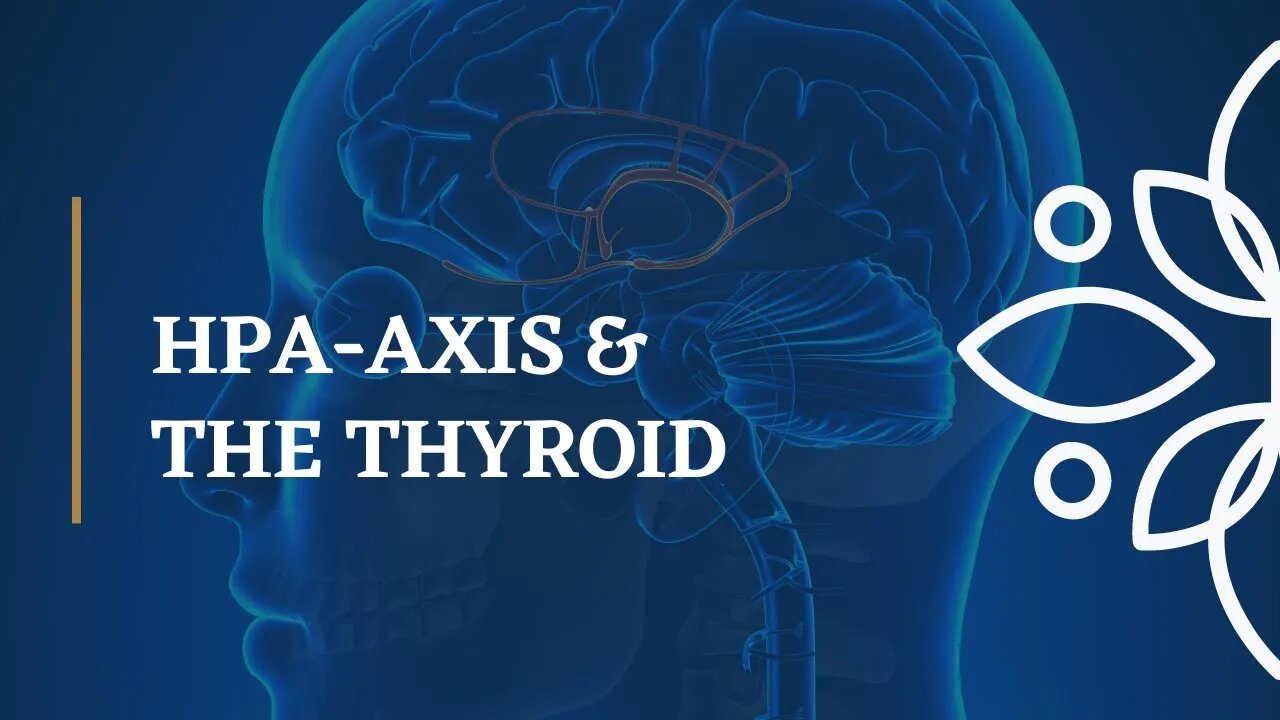Premium Only Content

Impact of HPA-Axis Dysfunction on the Thyroid, Mood and Health
Dr. Dawn-Elise Snipes is a Licensed Professional Counselor and Qualified Clinical Supervisor. She received her PhD in Mental Health Counseling from the University of Florida in 2002. In addition to being a practicing clinician, she has provided training to counselors, social workers, nurses and case managers internationally since 2006 through AllCEUs.com Want to chat with me? Join me at https://members.docsnipes.com/ For $10/month you get access to my daily tips for health and wellness and you can text chat with me privately.
#thyroid #hpa #integrative #depression
Biopsychosocial Aspects of HPA-Axis Dysfunction
Objectives
- Define and explain the HPA-Axis
- Identify the impact of trauma on the HPA Axis
- Identify the impact of chronic stress/cumulative trauma on the HPA-Axis
- Identify symptoms of HPA-Axis dysfunction
- Identify interventions useful for this population
Based on
- Post-traumatic stress disorder: the neurobiological impact of psychological trauma
Dialogues Clin Neurosci. 2011 Sep; 13(3): 263–278.
https://www.ncbi.nlm.nih.gov/pmc/articles/PMC3182008/
- Lifestyle Factors Contributing to HPA-Axis Activation and Chronic Illness in Americans
Archives of Neurology and Neuroscience. 2019 Oct.; 5(2) ANN.MS.ID.000608. DOI:10.33552/ANN.2019.05.000608
https://irispublishers.com/ann/pdf/ANN.MS.ID.000608.pdf
What is the HPA Axis
- Hypothalamic-Pituitary-Adrenal Axis
- Controls reactions to stress and regulates digestion, the immune system, mood and emotions, sexuality, and energy storage and expenditure
- The signs and symptoms of HPA-Axis dysfunction reflect a persistent, abnormal adaptation of neurobiological systems to trauma or chronic stress.
- In addition to trauma, multiple lifestyle factors have been associated with HPA-Axis dysregulation including
- Noise
- Stimulant use (caffeine, nicotine, ADHD medications)
- Insufficient quality sleep
- Media exposure
Consequences of HPA-Axis Dysfunction
- More than 50% of Americans suffer from one or more chronic conditions associated with disturbances of the HPA-Axis with an estimated cost of $3.3 trillion annually including:
- Major depressive disorder (20%)
- Generalized anxiety disorder (18.1%)
- Sex hormone imbalances (25%)
- Diabetes (9.2%)
- Autoimmune disorders (23%)
- Chronic pain
- Metabolic syndrome (30%)
- Cardiovascular disease (44%)
- Hypothyroid (4.6%)
- IBS symptoms such as constipation and diarrhea
- Reduced tolerance to physical and mental stresses (including pain)
Overview of Healthy HPA-Axis Function
- When exposed to a physical, environmental or social stressor, the HPA-Axis is activated and prompts the “fight or flight” reaction.
- Glutamate and Norepinephrine are released
- The hypothalamus releases corticotropin releasing factor (CRF) and arginine vasopressin (AVP) to stimulate the anterior pituitary to produce and secrete adrenocorticotropic hormone (ACTH).
- ACTH causes glucocorticoid (cortisol) synthesis and release from the adrenal glands
Overview of Healthy HPA-Axis Function
- Cortisol’s primary function is to
- Increase blood glucose and modify fat and protein metabolism to fuel the fight or flight reaction
- Modulate immune and brain function to effectively manage stressors.
- Cortisol initially causes a potent anti-inflammatory response which allows the organism to react to the stressor without being pain or fatigue.
- Glucocorticoids interfere with the retrieval of traumatic memories
- As cues of the threat wane, the body increases inflammation by releasing proinflammatory cytokines to accelerate wound healing
Stress Response
- The response of an individual to stress depends not only on stressor characteristics, but also on factors specific to the individual.
- Perception of stressor
- Proximity to safe zones
- Similarity to victim
- Degree of helplessness
- Prior traumatic experiences
- Amount of stress in the preceding months
- Current mental health or addiction issues
- Availability of social support
- Compared to positive events, negative events, or “stress” causes greater awareness and recall of event details leading to stronger encoding of negative or stressful events.
-
 1:00:36
1:00:36
DocSnipes
1 year agoRevealing the Influence of the Past on Relationship Skills
178 -
 55:05
55:05
BonginoReport
4 hours agoExtinct Dire Wolves Are Back (Kinda) — But Should They Be? BR Early Edition w/ Evita (Ep.177)
113K41 -
![🔴[LIVE TRADING] Time To Buy The Dip?! || The MK Show](https://1a-1791.com/video/fww1/4c/s8/1/x/r/i/A/xriAy.0kob-small-The-MK-Show-Apr.-8th.jpg) LIVE
LIVE
Matt Kohrs
11 hours ago🔴[LIVE TRADING] Time To Buy The Dip?! || The MK Show
1,259 watching -
 LIVE
LIVE
Wendy Bell Radio
6 hours agoEnemies Are Not Welcome
9,647 watching -
 LIVE
LIVE
The Big Mig™
4 hours agoTrump Calls For Congress To Abolish The Income Tax
2,328 watching -
 1:10:30
1:10:30
2 MIKES LIVE
2 hours agoTHE MIKE SCHWARTZ SHOW with DR. MICHAEL J SCHWARTZ 04-08-2025 with Steve Stern!
5.7K1 -
 1:14:00
1:14:00
Randi Hipper
1 hour ago20,000 SUBSCRIBER CELEBRATION! LATEST BITCOIN NEWS
5.72K -
 1:26:13
1:26:13
JULIE GREEN MINISTRIES
4 hours agoLIVE WITH JULIE
145K216 -
 49:05
49:05
Game On!
20 hours ago $3.63 earnedA Champion has been CROWNED! Plus Masters 2025 Preview!
39.1K1 -
![Supreme Court (Not Barrett) Allows Trump Admin to Enforce Deportations of Gang Members [EP 4506-8AM]](https://1a-1791.com/video/fww1/1a/s8/1/1/w/Z/y/1wZyy.0kob.2-small-Supreme-Court-Not-Barrett-A.jpg) LIVE
LIVE
The Pete Santilli Show
5 days agoSupreme Court (Not Barrett) Allows Trump Admin to Enforce Deportations of Gang Members [EP 4506-8AM]
541 watching